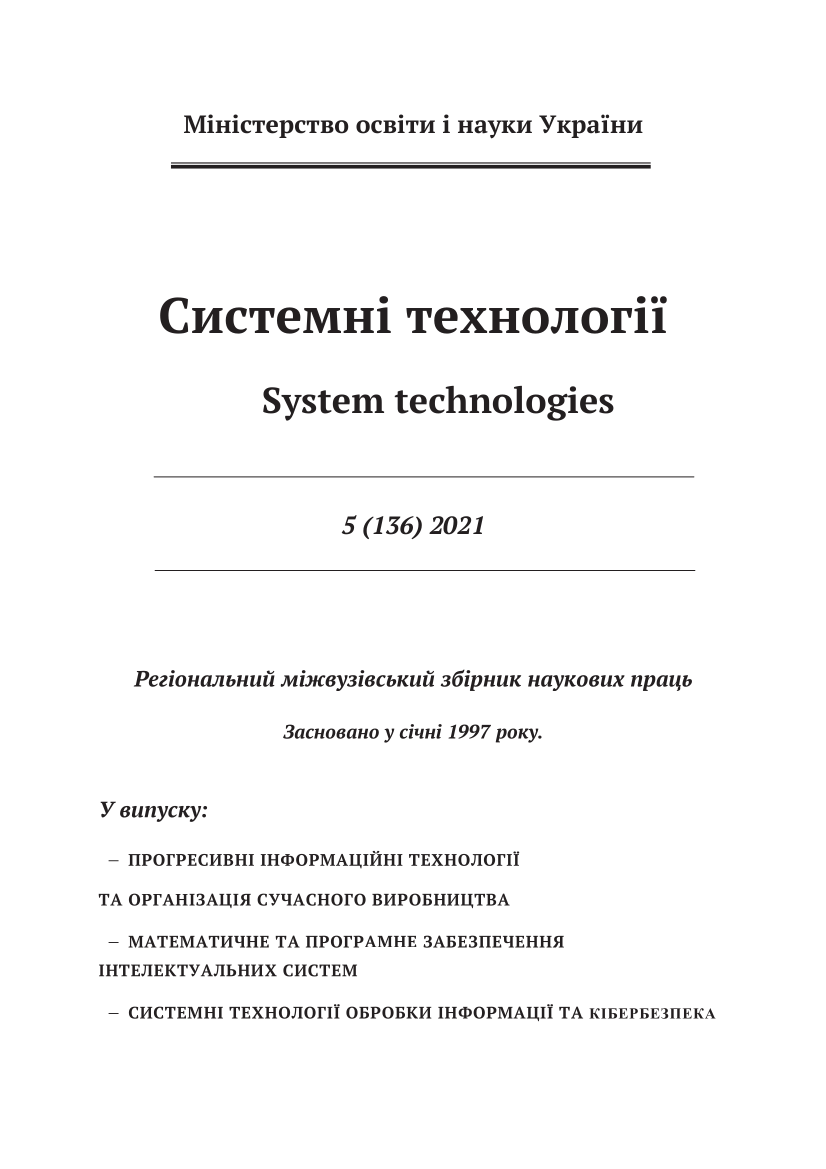Поліпшення напівтонових зображень у базисі ортогональних характеристик нечіткості типу_2
DOI:
https://doi.org/10.34185/1562-9945-5-136-2021-12Ключові слова:
напівтонові зображення, нечітка логіка, функція приналежності тіпа_2, ортогональні перетворення, синтез характеристикАнотація
Наведено алгоритм поліпшення напівтонових зображень, який заснований на процесі формування багатовимірного ансамблю ознак на основі вихідних даних з вико-ристанням нечіткості типа_2 з подальшим застосуванням ортогонального перетво-рення і візуалізації характеристик, синтезованих на основі власних значень. Розгляну-то інформаційні можливості алгоритму при використанні різних методів ортого-налізації: сингулярного розкладання, перетворення Грамма-Шмідта та нечіткого ме-тоду головних компонент. Показано, що алгоритм дозволяє враховувати невизна-ченість вихідних даних, виконує анізотропну фільтрацію в двовимірної площини про-сторових частот, що забезпечує поліпшення візуальних характеристик вихідних зоб-ражень. Експериментальні результати представлені на прикладі реального оптичного мікроскопічного зображення.
Посилання
John C. Russ , F. Brent Neal The Image Processing Handbook 7th Edition CRC Press; 2015. -1053 с.
O.B. Sukhova, N.V Karpenko. The peculiarities in contact interaction processes and technology to fabricate multi-layered composites // Metallofizika i Noveishie Tekhnologii.– 2008. – Vol. 30. рр. 585-594.
Yegorov A., Akhmetshina L. Optimizatsiya yarkosti izobrazheniy na osnove neyro-fazzi tekhnologiy. Monografiya. Izd. Lambert - 2015. – 139 P.
Forsayt D., Pons ZH. Komp'yuternoye zreniye. Sovremennyy podkhod. M .: Izd. d. Vil'yams, - 2004. 465 s.
Сhi Z., Yan H., Pham T. Fuzzy algorithms: With Applications to Image Processing and Pattern Recognition. – Singapore; – New Jersey; – London; – Hong Kong: Word Scientific, 1998. – 225 p.
Castillo O., Melin P.: Type-2 Fuzzy Logic: Theory and Applications. Springer-Verlag, - 2008. pp. 121-132.
L. Akhmetshina, A. Yegorov. Low-Contrast Image Segmentation by using of the Type-2 Fuzzy Clustering Based on the Membership Function Statistical Characteris-tics / International Scientific Conference Lecture Notes in Computational Intelli-gence and Decision Making. AISC, - Vol. 1020. рp. 689-700.
Horia F. Pop. Principal components analysis based on a fuzzy sets approach // Studia Univ. Babes¸–Bolyai, Informatica, - 2001.- Vol. XLVI, № 2. - рр. 45-52.
Streng G. Lineynaya algebra i yeye primeneniya / Streng G .; [per s angl. YU.A. Kuz-netsova, D. M. Foge]; pod red .. G.I. Marchuka // - M .: Mir, 1980. - 423 s.
Завантаження
Опубліковано
Номер
Розділ
Ліцензія

Ця робота ліцензується відповідно до ліцензії Creative Commons Attribution 4.0 International License.















